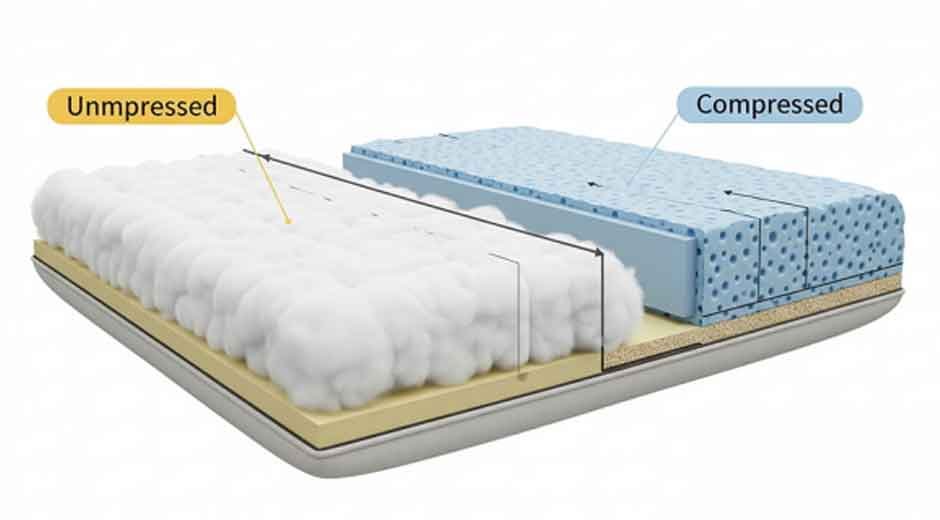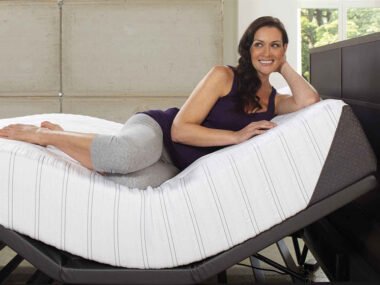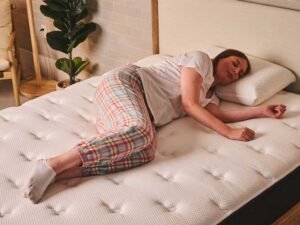We’ve all been there – you walk into your living room and notice your once-plump couch cushions looking more deflated than a punctured balloon at a birthday party. Those attached cushions that seemed so convenient when you bought the sofa are now sporting permanent dents that make your couch look like it’s been through a wrestling match with gravity (and lost). But before you start browsing for new furniture or accepting defeat, let me tell you a secret: those sad, flat cushions can be resurrected!
Whether you’re dealing with everyday wear and tear or trying to restore cushions that have seen more Netflix marathons than a pandemic lockdown, this comprehensive guide will walk you through everything you need to know about fluffing attached couch cushions. And if you’re looking to upgrade your outdoor seating while you’re at it, you might want to check out some quality outdoor furniture cushions that maintain their shape and comfort season after season.
Understanding Why Attached Cushions Lose Their Fluff
Before we dive into the solutions, let’s talk about why this happens in the first place. Attached couch cushions are basically the introverts of the furniture world – they’re permanently connected to the frame, which means they can’t be easily removed for maintenance. Over time, the filling inside these cushions gets compressed from regular use, much like how your motivation gets compressed on Monday mornings.
The most common filling materials in attached cushions include:
- Polyurethane foam:The most common type, but also the most prone to compression over time
- Down and feather mix:Luxurious but requires regular maintenance
- Polyester fiber fill:Budget-friendly but tends to clump together
- Memory foam:Great for support but can lose its bounce-back ability
The Prep Work: What You’ll Need
Before we start the fluffing process, gather these tools. Think of this as your cushion rescue kit:
“The right tools make all the difference between a quick fix and a long-lasting solution. Trust me, your future self will thank you for being prepared.”
- A vacuum cleaner with upholstery attachment
- Clean tennis balls or dryer balls
- A hair dryer (yes, really!)
- Fabric steamer or iron with steam function
- Clean towels
- Upholstery brush or soft-bristled brush
- Patience (this one’s crucial!)
Method 1: The Tennis Ball Technique
This method is like giving your cushions a deep tissue massage, but with tennis balls. It’s surprisingly effective and oddly satisfying to watch.
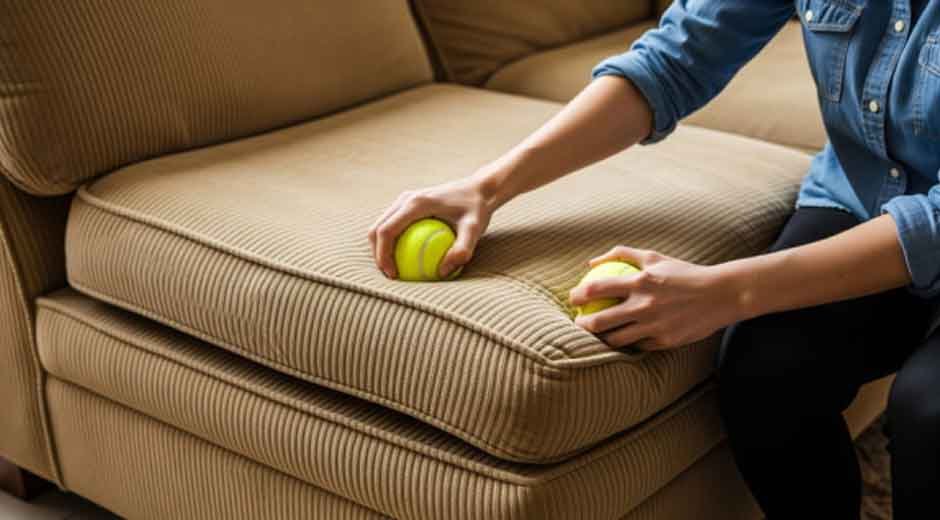
- Start with clean balls:Make sure your tennis balls are clean – you don’t want to transfer any dirt to your cushions.
- Work in sections:Place 2-3 tennis balls on different areas of the cushion and gently roll them around, applying moderate pressure.
- Focus on problem areas:Pay extra attention to spots where people typically sit or lean.
- Use circular motions:This helps break up compressed filling and redistributes it more evenly.
- Be patient:Spend at least 5-10 minutes per cushion for best results.
Method 2: The Heat and Steam Approach
Heat can work wonders on compressed cushion materials, helping them regain their original loft. This method is particularly effective for foam-filled cushions.
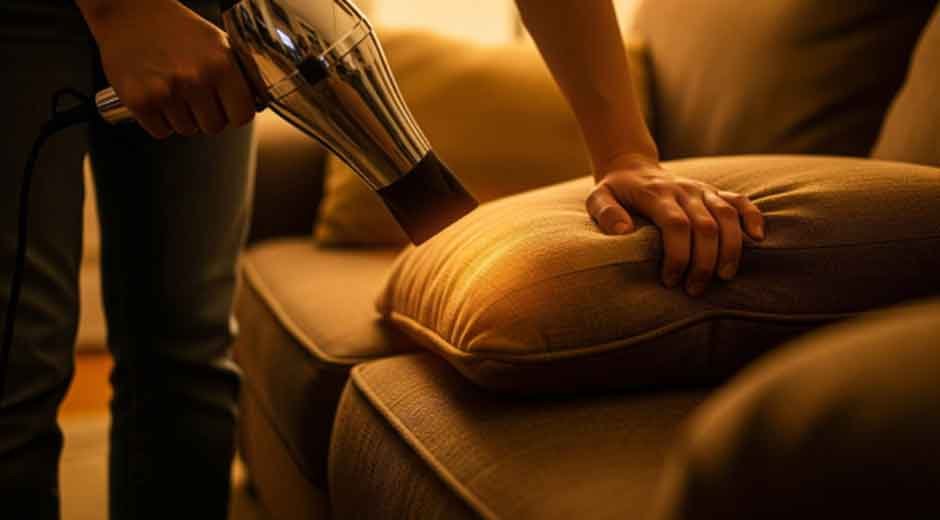
Using a Hair Dryer:
- Set your hair dryer to medium heat (not too hot – we’re not trying to cook the cushions!)
- Hold it about 6 inches away from the cushion surface
- Move it in circular motions while using your free hand to massage and fluff the area
- Work in small sections for about 30 seconds each
Steam Method:
- Use a fabric steamer or iron with steam function
- Hold it slightly above the cushion surface (don’t let it touch directly)
- Apply steam while gently kneading the cushion
- Allow the cushion to cool and dry completely before use
Method 3: The Vacuum Reverse Technique
This might sound counterintuitive, but using your vacuum in reverse can actually help reinflate compressed cushions. It’s like CPR for your furniture!
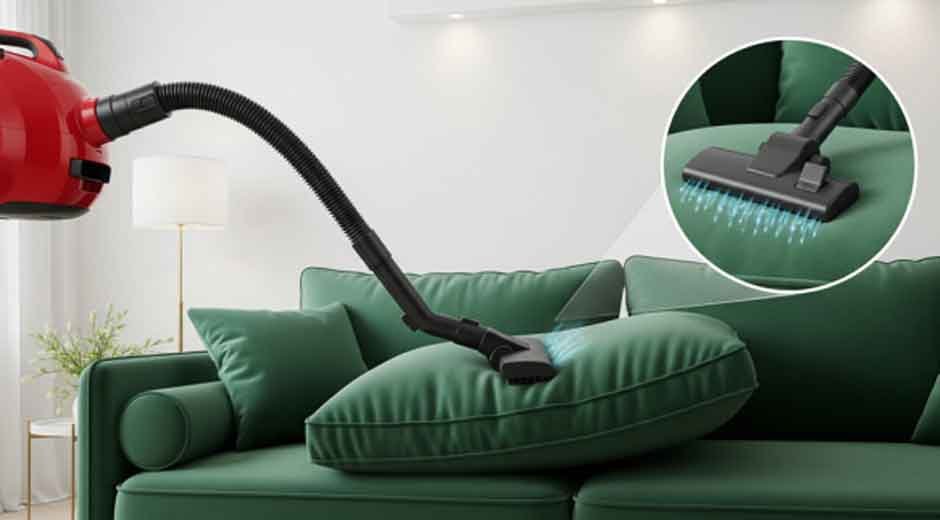
- If your vacuum has a reverse function, use it to blow air into the cushions
- If not, you can carefully use the suction side with the upholstery attachment
- Work the attachment over the cushion surface in overlapping strokes
- Follow up with manual fluffing to redistribute the filling
Advanced Techniques for Stubborn Cushions
Sometimes cushions are more stubborn than a cat that doesn’t want to go to the vet. For these challenging cases, you might need to bring out the big guns.
The Strategic Beating Method
Don’t worry – this isn’t as violent as it sounds! Use a clean paddle or the back of a large spoon to gently “beat” the cushions. This helps break up severely compressed areas and redistribute filling.
The Overnight Flip Trick
If possible, try to flip or rotate sections of your attached cushions and leave them in an unusual position overnight. Gravity can help redistribute the filling naturally.
Maintenance: Keeping Your Cushions Fluffy
Prevention is worth a pound of cure, as they say (or was it an ounce? Either way, you get the point). Here’s how to keep your cushions looking fresh:
| Frequency | Action | Benefit |
| Daily | Quick fluff by hand | Prevents daily compression from setting in |
| Weekly | Vacuum and brush | Removes debris and maintains texture |
| Monthly | Deep fluffing session | Restores shape and comfort |
When to Call It Quits: Signs Your Cushions Need Professional Help
Sometimes, despite our best efforts, cushions reach a point where DIY methods just aren’t cutting it anymore. Here are the red flags:
- Visible sagging that doesn’t improve with any fluffing method
- Lumpy areas that feel hard or completely flat
- Cushions that lose their shape within hours of fluffing
- Unpleasant odors that won’t go away
- Visible wear or tears in the fabric
Pro Tips from Furniture Experts
Here are some insider secrets that professional furniture restorers swear by:
- The rotation rule:If you have multiple seating areas, encourage family members to sit in different spots to distribute wear evenly.
- Climate control:Extreme humidity or dryness can affect cushion materials. Maintain consistent indoor climate when possible.
- Quality matters:Invest in furniture with high-quality filling materials from the start – they’ll maintain their shape much longer.
- Professional cleaning:Annual professional cleaning can work wonders for both appearance and longevity.
Alternative Solutions: When Fluffing Isn’t Enough
If your attached cushions are beyond redemption, don’t despair! There are several creative solutions:
Strategic Cushion Placement
Add decorative throw pillows or smaller cushions to problem areas. This not only provides extra comfort but also helps disguise worn spots.
Cushion Toppers
Consider adding a thin foam topper or cushion pad over problematic areas. These can be found at most home improvement stores and are relatively inexpensive.
The Science Behind Cushion Compression
For the curious minds out there, let’s dive into the physics of why cushions lose their fluff. When we sit on a cushion, we’re applying pressure that compresses the air pockets within the filling material. Over time, these materials lose their elasticity – kind of like how a rubber band becomes less stretchy after being used repeatedly.
Different materials respond differently to compression:
- Foam:Has memory properties but can develop permanent compression sets
- Down:Naturally resilient but requires regular redistribution
- Synthetic fills:Vary widely in quality and compression resistance
Cost-Benefit Analysis: Restore vs. Replace
Before investing time in restoration, consider these factors:
Restore if:
- The frame is still in good condition
- The fabric shows minimal wear
- The compression is relatively recent
- You’re emotionally attached to the piece
Replace if:
- The frame is damaged or unstable
- Multiple restoration attempts have failed
- The cost approaches that of replacement
- You’re ready for a style update anyway
Conclusion: Your Cushions’ Second Chance at Life
Fluffing attached couch cushions might seem like a losing battle, but with the right techniques and consistent maintenance, you can significantly extend their lifespan and comfort. Remember, the key is consistency – a little attention regularly goes much further than intensive intervention when things have gotten bad.
Whether you’re working with a beloved family heirloom or a budget-friendly sofa, these techniques can help restore comfort and appearance. And who knows? You might even find the process oddly therapeutic – there’s something satisfying about bringing tired furniture back to life.
Looking to Upgrade Your Outdoor Seating?
While you’re mastering the art of cushion care for your indoor furniture, don’t forget about your outdoor spaces! At Rulaer, we specialize in high-quality outdoor bench cushions that are designed to maintain their shape and comfort through countless seasons. Our cushions feature weather-resistant materials and superior construction that resists compression, meaning less maintenance and more time enjoying your outdoor oasis.
From cozy patio benches to elegant garden seating, our collection offers styles and sizes to complement any outdoor décor. Because life’s too short for uncomfortable outdoor furniture – and you’ve already put enough effort into fluffing cushions for one day!
